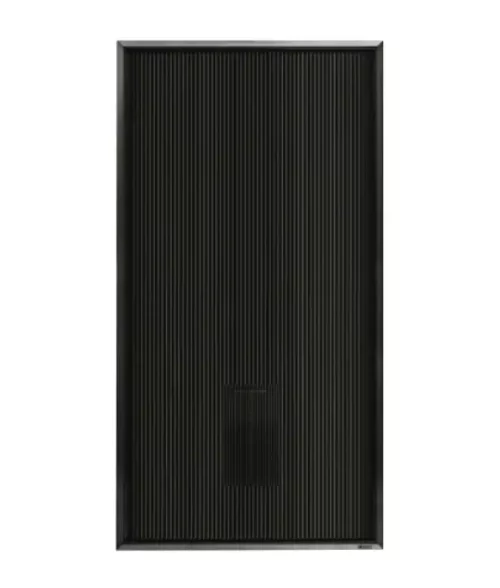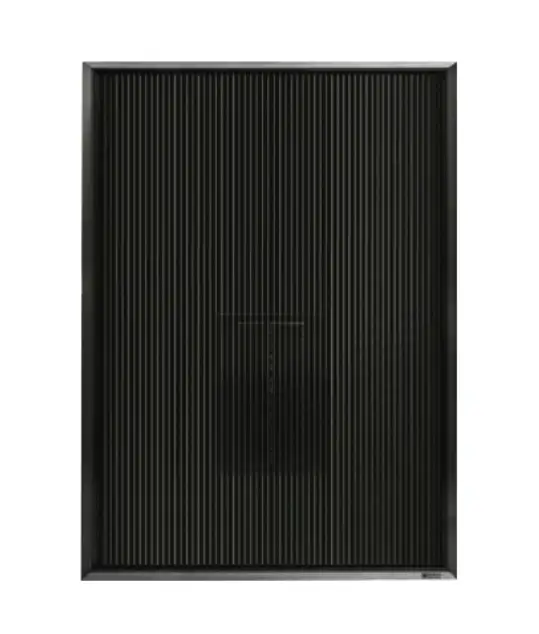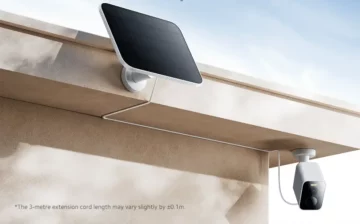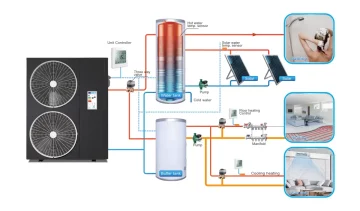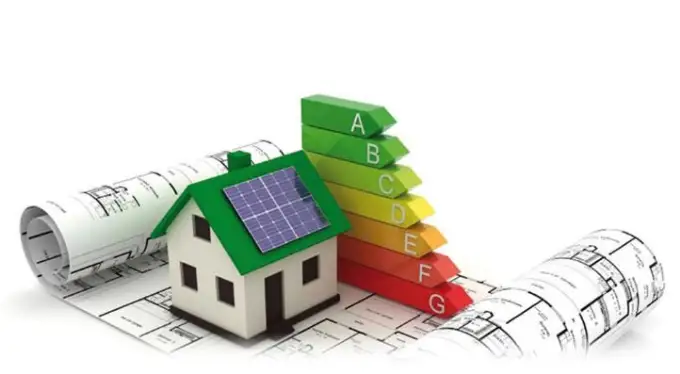Walls are wetted in the room: the reasons and solutions
Causes of wet of walls in rooms
The cause of the wetness of the walls is condensate, which is formed due to excessive leaching of the house, as well as due to an ineffectively working system of the ventilation system.
In order to correctly determine the reason why the walls get wet, you need to pay attention to the following factors:
- The time of the year when the walls are wet;
- The proximity of the foundation and the floor on which high humidity was noticed;
- External wall or internal;
- The scale of the problem: how much and how often the walls are wetted, how long the effect of humidity remains.
Realizing these reasons, you can begin to solve the problem. The complex of measures depends on each specific case, however, most often it will require insulation of the room outside or from the inside and conduct a good ventilation system, which will remove dampness, thereby adjusting the microclimate.
What to do if the wall is wet in the house: we solve the problem individually
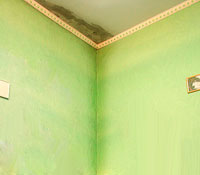
The situation does not allow seasonal installation of a spot heater or window ventilation of the room. Here, a set of measures is needed that will solve this problem, while it must be effective, inexpensive, and suitable.
1. The walls in a private house in winter and autumn are wet due to freezing of the outer wall.This is also characteristic of buildings of a new building in which the insulation layer is laid either with errors, or not laid down at all.
Therefore, firstly, you need to insulate the structure outside.Then – dry and clean the problem areas on the walls and conduct ventilation.Do not save on it, since it will be more expensive to carry out constantly repeating repair and removal of mold.
2. The ventilation of the room is incorrectly organized. This is manifested in condensation on glasses and sweaters on the walls next to the windows, in some cases, other sections of the walls are wetted. There are several solutions:
- If we are talking about the secondary housing stock, then most often it will be necessary to clean and debug the ventilation system.
- It is possible that the ventilation system is already laid down with errors, or one of the residents carried out repairs and violated the common house air exchange. In this case, repair or organization of additional air circulation is required.
- If any specific sections of the walls are constantly wet, rearrange the furniture or remove all unnecessary items from the wall: perhaps the air cannot enter this site due to the pile of things.
3. Poor waterproofing. This option is well known to the owners of apartments on the first and last floors. To solve the problem, it is necessary to find the source of the leak through which water enters the building, carry out repairs, and then install good ventilation, which will help prevent further wetting of the walls, damage to furniture and damage to supporting structures.
Why are the walls wet in the bath?
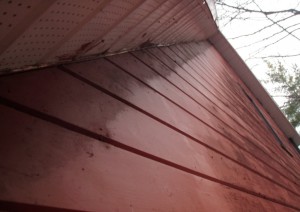
The reason is simple – the temperature difference between inside and outside. When the bath is actively used, normal natural ventilation does not do the job. Condensation sources are:
- high humidity;
- high temperatures indoors, as a result of which there is a large difference between temperatures inside and outside;
- incorrectly executed ventilation system;
- The miscalculations in the thermal insulation of the bath.
The consequences of wetting the walls are obvious:
- destruction of supporting structures, decay of wood;
- propagation of mold, fungi and harmful microorganisms for health;
- poor aesthetic type of room;
- A musty smell, which over time cannot be removed.
Good ventilation will help get rid of excess moisture. Natural ventilation will not cope with the task. It is necessary to provide the bath with additional exhaust (or supply and exhaust) ventilation. It will remove moist air from the room, replacing it with dry and fresh.
Wet the wall of the garage – what to do?
Most often, the cause of the walls of walls in garages are:
- errors in the calculations during design;
- “Innovations” in the neighborhood – for example, conducting a sample of construction work that change the level of groundwater (pipe laying);
- improper thermal insulation and waterproofing of walls and floors.
All this leads to a violation of the temperature regime and air exchange, and, as a result, the accumulation of condensate. Moisture harms not only the structure of the garage and health, but also causes damage and destruction of things and mechanisms stored in the building.
When solving the problem, it is necessary to find out the cause of the walls of the walls, then drain the garage and eliminate the cause of the humidity, and then pay close attention to the ventilation system, replacing the natural with the supply and exhaust.
What to do if the wall is wetted in the warehouse or in the hangar?
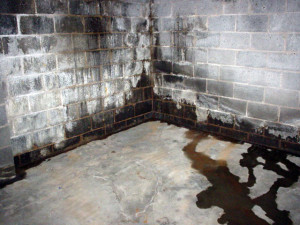
The wind in the warehouse threatens the company with direct losses, because products (or goods) are stored in improper conditions.
To avoid this problem, it is necessary to immediately pay close attention to the ventilation system of the warehouse or hangar.But if condensate and mold have already appeared, it is important to dry the room, clean, disinfect and mash damaged areas of the walls, then (if necessary) insulate the room, and then clean the existing ventilation system, if necessary, increasing its power.
In this case, it is important to understand what type of goods or products is stored in the warehouse, and based on this, choose materials to clean the surface and eliminate dampness, since there are means that cannot be used in rooms where they are stored, food products or grain.
The same tips are relevant for hangar premises.
What to do if the walls are wet in the production room?
If the inner wall in the production room gets wet, this problem must be solved immediately: the serviceability of the equipment and the health of the workers are at risk.
Increased air humidity contributes to the spread of infections, is the soil for the appearance of various types of mold, a dispute between fungi and microorganisms.In addition, mold harms the equipment and the supporting structures of the building, spoils the aesthetic type of room, and increases heating and cosmetic repair costs.
Therefore, at the first signs of condensation, it is important to find the cause of the spread of dampness. Most often, such a problem occurs in the autumn-winter period due to the features of ventilation and heating of such premises.
It may be necessary to insulate the wall outside, while frozen and clean the areas damaged by humidity from the inside. However, sometimes it is enough to debug a ventilation system (or equip the room with an additional channel for the influx and outflow of air).
Effective ventilation – how to protect walls from moisture in rooms of any type
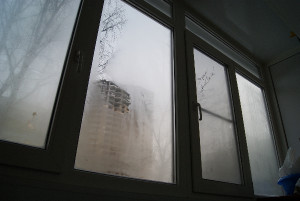
Usually, at the initial stages of condensation, the problems of wet walls are underestimated and let into gravity, which leads to serious consequences and high costs in the future.
It is important to understand that if the wall is wet in the house, then it is not enough to open the window, since wet air will not stretch out, especially in the autumn-winter period. Many use local heaters, believing that this solves the problem. In fact, drying and warming up the premises temporarily eliminate the consequences, but do not remove the cause of damage. As a result, the situation is repeated again and again.
It is necessary to adjust both the ventilation system and the heating system at the same time.
However, any additional ventilation system entails costs, one -time – for delivery and installation; And permanent – for electricity and maintenance.
Is there a way to reduce these expenses? Specialists in the field of ventilation and heating SOLAR FOX believe that there are.
Solar ventilation with heating – economical protection against wetting of walls
A private house, hangar, garage, bath or production room – a solar air collector can be installed in any room.
The installation of such a collector provides the room with proper ventilation, without requiring electricity costs.
The device saves on maintenance since it is constructively simple. Installation on the roof or wall is possible. In addition, in contrast to the devices operating from electricity, the solar battery is fireproof and environmentally friendly.

